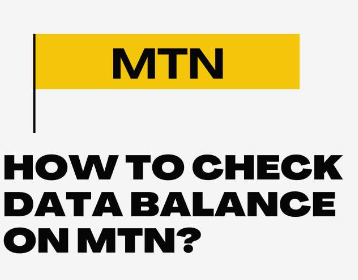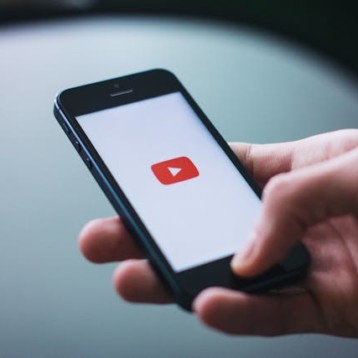An outgoing call is a call made from your phone to someone else’s phone. When you pick up your phone and dial a number to speak to someone else, you make an outgoing call. It doesn’t matter if the person you call is nearby or far away. You are the one who starts the call, making it an outgoing one. Outgoing calls can be made through mobile phones, landlines, or even internet apps.
In this guide, we will examine everything related to outgoing calls, including how they work, the different types, and what happens during them.

What Is an Outgoing Call?
An outgoing call means you are contacting someone else by phone. You could be calling to ask a question, share information, or just talk. It doesn’t matter if the call is short or long; if you are calling someone, it’s called an outgoing call.
Here’s a basic example: if you open your phone, enter a number, and press the “call” button, you make an outgoing call. The person receiving it will see an incoming call on their phone.
Outgoing Calls vs Incoming Calls
There are two main types of calls: outgoing and incoming. An outgoing call is when you dial someone else’s number to talk to them. You start the call. An incoming call is when someone calls you, and your phone rings. You are the one receiving the call. Both types can be voice calls, video calls, or even calls over the internet. The difference lies in who starts the call.
How Outgoing Calls Work
- Dialing the Number: When you make an outgoing call, you first dial the phone number. This could be a local number or an international one.
- Connecting the Call: Your phone connects to your carrier’s network (like AT&T, Verizon, or T-Mobile). This is done through radio waves for mobile phones or cables for landlines.
- Switching Networks: If you are calling someone on a different network, your phone carrier connects to their carrier’s network.
- Ringing: The call rings on the other person’s phone, waiting for them to pick up.
- Talking: Once the person answers, you can start talking. Your voice is transmitted through the network to the other person in real time.
Also Read: Outgoing Call vs Canceled Call: What’s The Difference?
Types of Outgoing Calls
Outgoing calls can be divided into several types depending on how they are made.
- Regular Phone Calls: These are made using your mobile or landline phone through your phone carrier’s network. They could be another mobile phone or a landline.
- Internet-Based Calls: Calls made over the internet are called VoIP (Voice over Internet Protocol) calls. Apps like WhatsApp, Skype, and Zoom allow you to make outgoing calls using your Wi-Fi or mobile data connection. These are often cheaper than regular calls, especially for long-distance or international calls.
- Video Calls: Some outgoing calls include video, allowing you to see the other person while talking. These calls use much more data, so they are mostly done over Wi-Fi.
Why Do People Make Outgoing Calls?
There are many reasons to make outgoing calls. Some of the common reasons are:
- Business Calls: You may need to contact clients, co-workers, or customers. Business calls are often formal and involve sharing important information.
- Personal Calls: People make outgoing calls to family or friends. These calls are casual and usually for catching up or checking in on someone.
- Emergencies: In an emergency, you may make an outgoing call to the police, a doctor, or someone else who can help. These calls can be very important.
Also Read: How To Find Someone’s Phone Number With Their Name For Free
The Cost of Outgoing Calls

The cost of an outgoing call depends on several factors. Here are some things that can affect the price of the call:
- Local vs. International Calls: Calling someone in your country is often cheaper than calling someone abroad. Many phone carriers charge extra for international calls.
- Mobile Plans: Some phone plans offer unlimited calls, while others charge for each minute used. Check what kind of plan you have so you don’t get unexpected charges.
- VoIP Calls: Calls made through apps like Skype or WhatsApp are often free or much cheaper, especially for international calls.
- Roaming Charges: If you are traveling in a different country, making an outgoing call can cost more because of roaming fees. Your phone company adds these charges when using their service in another country.
Understanding Call Logs
Every phone keeps a record of outgoing calls. You can check your call log to see who you called when you called, and how long the call lasted. This is helpful if you must remember who you spoke to or track your phone usage.
- Time of Call: The log shows the exact time you made the outgoing call.
- Call Duration: You can see how long the call lasted, from when the other person answered until you hung up.
- Contact Name or Number: The log shows the name (if saved in your contacts) or the number you dialed.
Also Read: 15 Random Numbers to Call When Bored For Fun
How to Make Outgoing Calls
Making an outgoing call is easy. Here’s a step-by-step guide to make a call from your mobile phone:
- Open Phone App: On most phones, you have an app called “Phone” where you can make calls.
- Dial the Number: You can either type the phone number on the keypad or select a contact from your phone’s contact list.
- Press Call Button: After entering the number, press the button that looks like a phone icon. This will start the call.
- Wait for an Answer: You’ll hear the phone ringing on the other end. Wait until the person picks up.
- End the Call: When you’re done talking, press the red button that looks like a phone hanging up to end the call.
Problems with Outgoing Calls
Sometimes, outgoing calls may not go through or can have issues. Here are some common problems:
- No Signal: If your phone has no signal or a weak signal, the call may not connect. This happens in areas with poor network coverage or inside buildings.
- Network Busy: If the network is too busy, your call might not connect. This usually happens during peak hours or in crowded areas.
- Call Dropped: Sometimes, your call can drop suddenly, meaning it ends without you hanging up. This is usually due to poor signal or network issues.
- International Restrictions: Some carriers block international outgoing calls by default. You may need to activate international calling before you can dial out to other countries.
Outgoing Calls and Privacy

When making outgoing calls, it’s important to consider privacy. Your phone number is shared with the person you are calling, so only make calls to people or businesses you trust.
- Caller ID: Most phones show your phone number to the person you call. You can turn off caller ID if you want to hide your number. However, some people may not answer calls from blocked numbers.
- Recording Calls: In some places, it is legal to record phone calls, while in others, you must ask for permission before doing so. Check the laws in your area if you plan to record a call.
Benefits of Outgoing Calls
- Immediate Communication: Outgoing calls allow you to talk to someone right away. Unlike text messages, calls are faster for getting quick answers.
- Personal Touch: Talking on the phone feels more personal than texting. You can hear the person’s tone and emotions, which helps build connections.
- Clarification: If you need something explained, it’s often easier to ask questions over a phone call than through messages.
Also Read: How To Text From A Different Number For Free? 5 Foolproof Techniques
Conclusion
In simple terms, an outgoing call is when you dial a phone number to talk to someone. It could be a regular phone call, a video call, or even a call over the internet. When you start the call, it’s called an outgoing call. This is an important way for people to stay connected, whether for work, family, or emergencies. Understanding how outgoing calls work, how much they cost, and the different types of calls can help you use your phone better. Making the right call helps you stay in touch with people anytime, anywhere.










